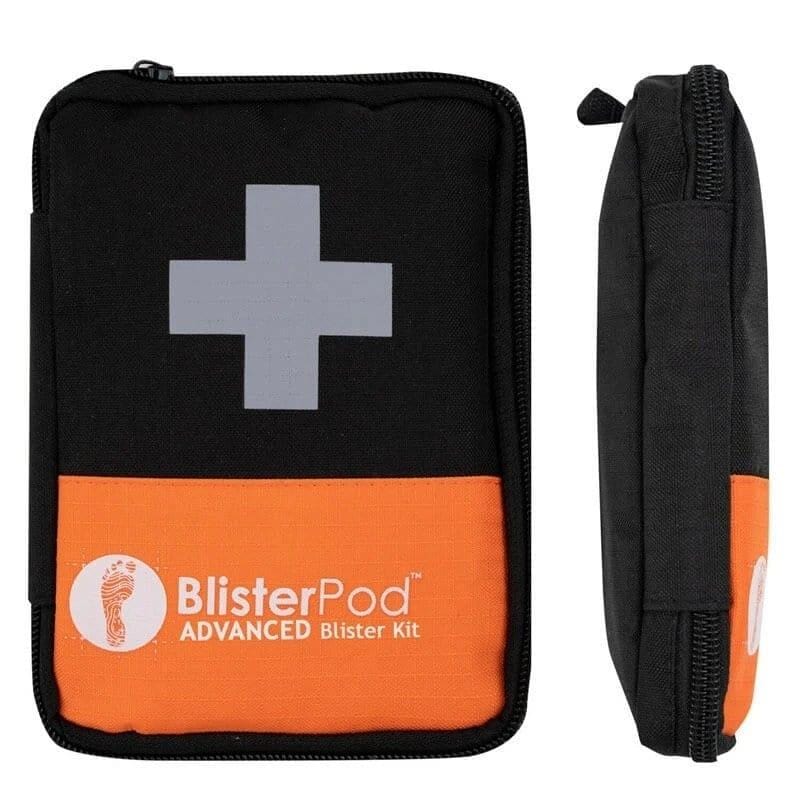
Dr Martin Fryer
Martin's Blister Experience
I have now completed two 6 Day Races and one 10 Day Race in which I have been very dependent on ENGO patches for blister control. I really can’t think of any tougher test for this product. Your feet are subjected to every possible type of friction/shear stress possible over a very long period of time. During a race of this duration weather conditions will often range from dry to wet and from hot to freezing cold. Moreover, your feet can swell to almost 2 shoes sizes larger. This makes it quite a challenge to control the amount of space in the shoe and the amount of pressure against various parts of the foot and ankle.
At the recent 10 Day Race, I averaged 116 km per day for 10 days. I used ENGO patches of all shapes and sizes. From previous experience I found that I needed to have various pairs of shoes that were progressively half a size larger to change into as the race progressed. Most of this strategy was to accommodate my very wide and flat feet in the forefoot and toe region.
Going Up A Shoe Size
The problem with moving up the shoe sizes during the race is that the rest of the shoe can become somewhat loose on the foot and move around. This is not easily fixed by lacing. Tight lacing starts to impinge on the front of the ankle and cause its own problems. When the shoe is a bit looser like this I use the ENGO patches on the places where I would normally start to develop hotspots/blisters due to the extra shoe movement. I first put a heel patch in every single shoe that I wear in the race. I have never had a heel blister - ever, using this method. That's a testament to the low coefficient of friction of the patch.
The second patch I put on is on the arch/instep region. This alone has stopped the blisters/irritation I used to get in that area. But when I combine this approach with putting Compeed/Second Skin type patches in the same area as an extra preventative measure I have absolutely perfect results. In the 10 Day Race the ENGO patches would not require replacing. But I would replace the Compeed/Second Skin patches every 2nd day.
Blisters Under Ball of Foot
The third area where I found the ENGO patches to be brilliant were under the medial side of the ball of my foot where the main pressure points are with the bottom of the shoe. I have seen many experienced ultrarunners succumb to very bad, race-destroying blisters at this site. As I started to feel hotspots developing through the race I would put a large rectangular ENGO patch there and had no problems for the rest of the race.
Cutting The Shoe To Give Pressure Relief To The Toes
One area that is problematic for multiday runners is toe blisters. I have tried putting ENGO patches inside the shoe where my toes rub. This helps to some extent but ultimately is not enough. That's because the issue is actually one of mechanical pressure – the top of the toes hitting the roof of the shoe with every step rather than simply sliding against the shoe like the other hotspot areas. The only solution that works for this is to literally cut out the parts of the roof of the shoe that the toes are hitting.
The first pair of shoes that I butchered with trauma shears to relieve the toe pressure I lopped off too much of the front of the shoe and the shoe lost its integrity and moved around too much. With a somewhat more measured approach to cutting on the second set of shoes I had soon perfected this technique. Eventually I had my shoes perfectly set up by Days 4-5: heel, arch and ball of foot ENGO patches in each shoe and the toe regions cut out of each just enough to prevent any mechanical toe trauma.
The Right Ultramarathon Blister Prevention Formula
Once I had this formula right I ran the last 5 days comfortably in the same pair of shoes (one size larger) covering well over 500K. It was lovely to have that confidence that there would be no more foot issues!
Wrapping up
Are you on top of your blister situation? If you’re not 100% sure what you’re doing, I encourage you to:
- Take a look through this website.
- Or for a guided approach, join the Fix My Foot Blisters Fast course. When you do, I'll walk you through the process of building your own ultramarathon blister prevention plan.
- Or take Dr Martin Fryer's advice and try ENGO Blister Patches.








